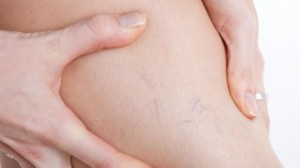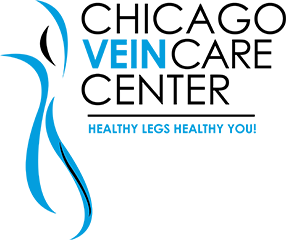 Varicose veins and spider veins are just two of the more common vein disorders. Other problems related to vein disease include leg swelling, leg pain, ulcers and blood clots. Blood clots can occur in the superficial veins where they are usually accompanied by inflammation (phlebitis) or they can occur in the deep veins (deep vein thrombosis). About half of all Americans have some type of vein disease. Once present, vein disease tends to progress or worsen. That is why it is so important to seek treatment early.
Varicose veins and spider veins are just two of the more common vein disorders. Other problems related to vein disease include leg swelling, leg pain, ulcers and blood clots. Blood clots can occur in the superficial veins where they are usually accompanied by inflammation (phlebitis) or they can occur in the deep veins (deep vein thrombosis). About half of all Americans have some type of vein disease. Once present, vein disease tends to progress or worsen. That is why it is so important to seek treatment early.
What Chicago, IL residents should know about vein disease
The arteries of our bodies carry oxygenated blood to our various organs and tissues. Our veins are responsible for returning blood from these organs and tissues back to the heart. Veins are able to propel blood upward from our legs to the heart with the help of one-way valves. When these valves malfunction, blood tends to pool in the lower parts of the veins especially in the legs. When this happens, the veins become enlarged due to the increase in pressure. These enlarged, twisted veins are called varicose veins.
Arteries become smaller and smaller as they approach their destination, for example, the leg muscles. When they reach the muscle tissue, they are usually very small and are called capillaries. After the muscle tissue absorbs oxygen and nutrients from the capillaries, these small vessels rejoin to form small veins leading back to the heart. If the veins are engorged with blood due to leaky valves, the blood backs up into the delicate capillaries which can easily burst. These “burst capillaries” are commonly known as spider veins because they look like spider webs.
What are the symptoms of vein disease?
Varicose veins can lead to leg swelling, skin changes and, in severe cases, ulceration of the skin. Many people with varicose veins have no symptoms, but are unhappy with their appearance. Others say that “my legs hurt” especially after standing for long periods. Some people complain of itchy skin or cramping in their legs. Clots that form in the veins can be extremely painful. If a clot forms in a deep vein, a part of it can break off and travel to the lungs. This is a serious complication that is life-threatening and requires immediate medical treatment. Swelling in the legs that is present for a long time can lead to an infection called cellulitis or it can lead to skin ulcers that are difficult to heal.
Finding vein disease treatment
Dr. Ramon Castro, a leading vein doctor, is an expert in vein disease treatment and knows how to manage varicose veins, spider veins, superficial thrombophlebitis and deep vein thrombosis with state-of-the-art procedures. It is vitally important to have a highly trained and experienced vein specialist evaluate your specific vein disease and advise you as to the most appropriate treatment. Dr. Ramon Castro is highly skilled in sclerotherapy, phlebectomy, endovenous laser ablation, and endovenous laser therapy (EVLT). He can also advise you of conservative treatments such as compression stockings, leg elevation, exercise and healthy weight management. You will receive courteous, compassionate and affordable treatment recommendations at the Chicago Vein Care Center. Do not hesitate to call the center at (773) 283-7887 to have all your questions and concerns answered. Take charge of your health and make this first step in preventing further complications of your vein disease.
